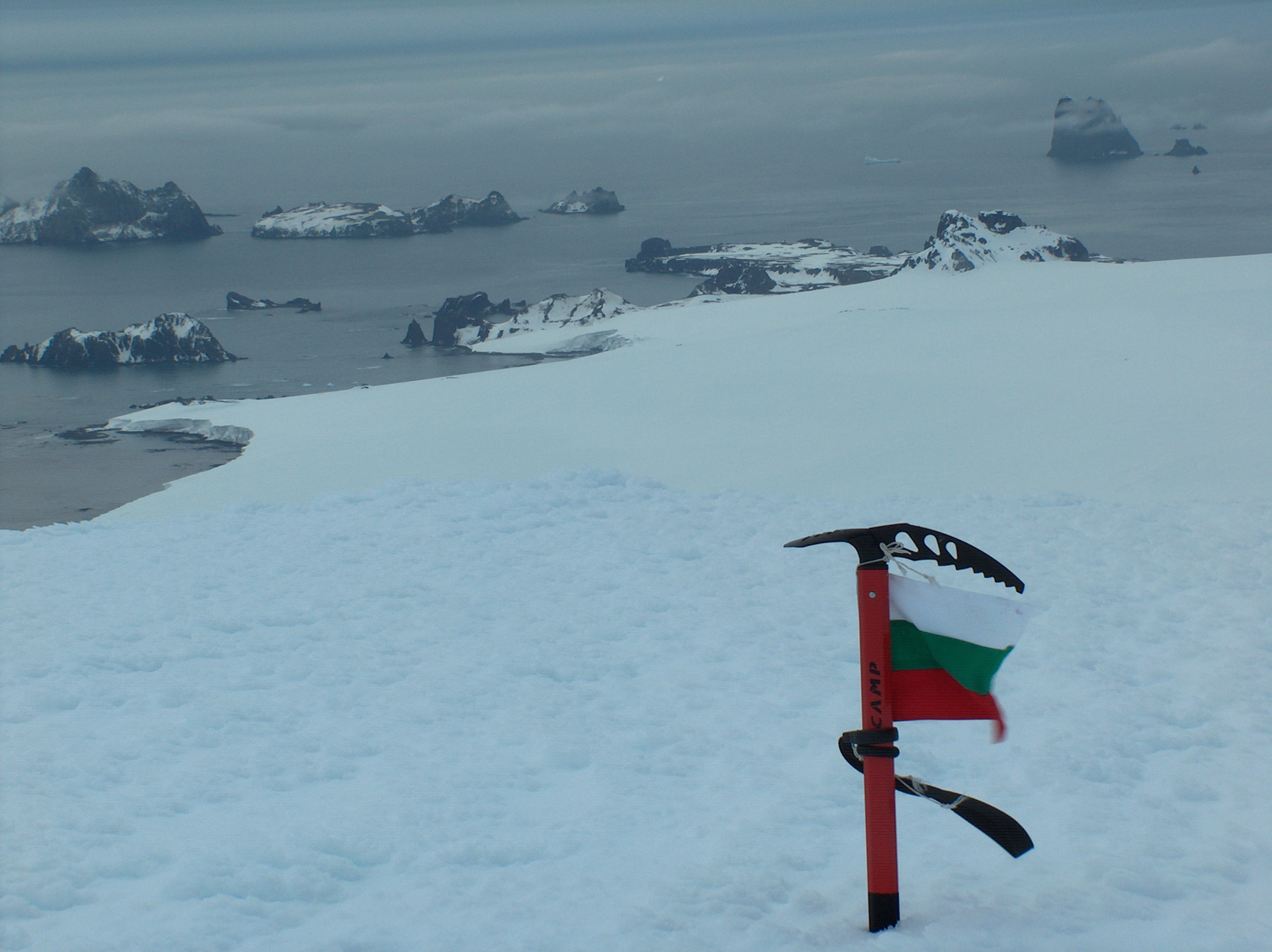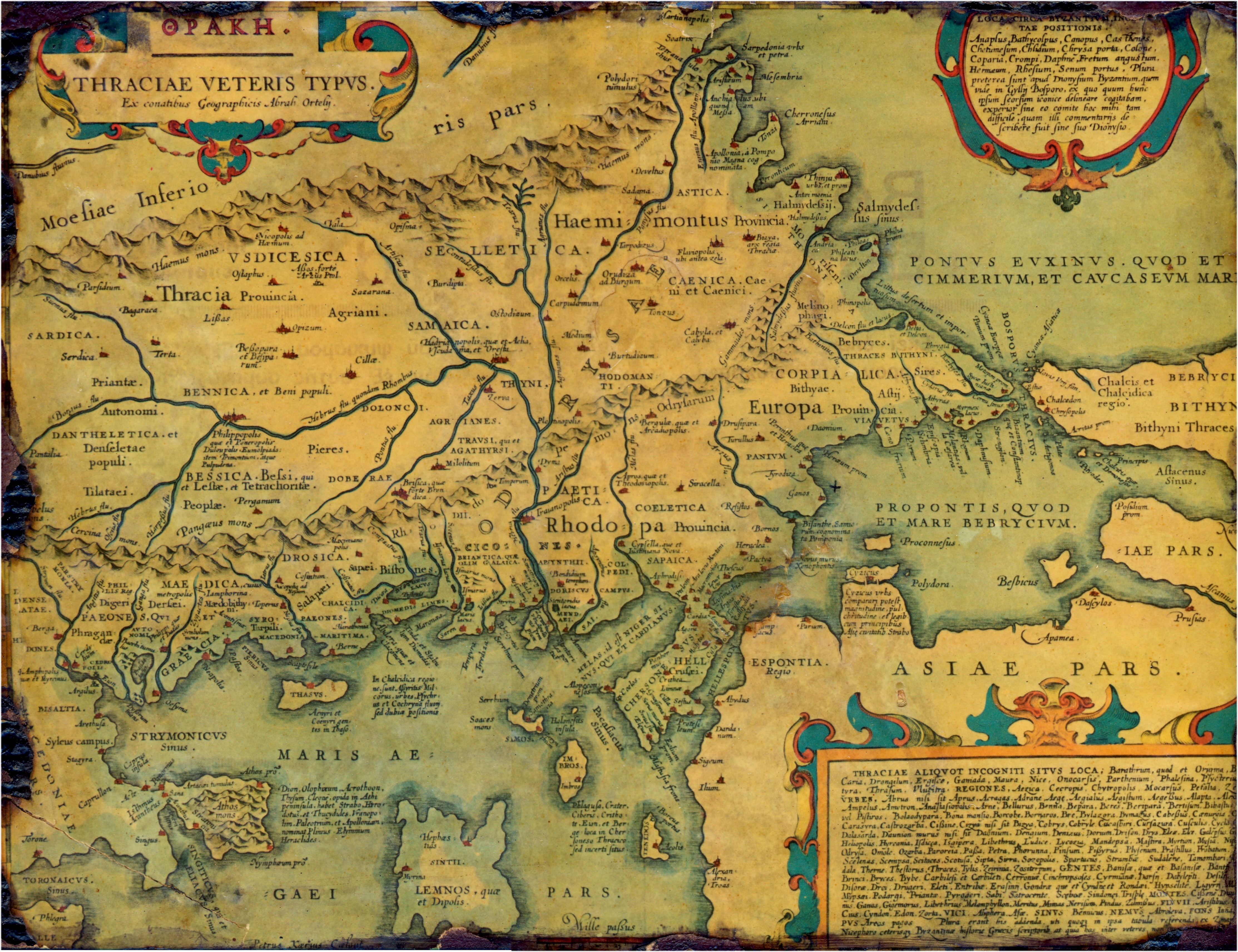|
Rhescuporis I (Sapaean)
Rhescuporis I was the Sapaean king of Thrace in 48-41 BC. He was the son of Cotys I. Raskuporis Cove on Livingston Island in the South Shetland Islands, Antarctica is named after Rhescuporis I. See also * List of rulers of Thrace and Dacia This article lists kings of Thrace and Dacia, and includes Thracian, Paeonian, Celtic, Dacian, Scythian, Persian or Ancient Greek rulers up to the point of its fall to the Roman Empire, with a few figures from Greek mythology. Mythological *Haemu ... 1st-century BC monarchs in Europe Kings of Thrace Roman client monarchs {{Ancient-Thrace-stub ... [...More Info...] [...Related Items...] OR: [Wikipedia] [Google] [Baidu] |
Sapaeans
Sapaeans, Sapaei or Sapaioi (Ancient Greek, "Σαπαίοι") were a Thracian tribe close to the Greek city of Abdera. One of their kings was named Abrupolis and had allied himself with the Romans. They ruled Thrace after the Odrysians until its incorporation by the Roman Empire as a province. Sapaean Kings of Thrace * Cotys I son of Rhoemetalces * Rhescuporis I son of Cotys I 48 BC-41 BC * Cotys II son of Rhescuporis I 42 BC – 15 BC :*Thrace becomes a client state of Rome at 11 BC * Rhoemetalces I son of Cotys II 15 BC – 12 AD * Rhescuporis II son of Cotys II in western Thrace; 12–18 AD deposed * Cotys III son of Rhoemetalces I in eastern Thrace 12–18 murdered * Rhoemetalces II son of Cotys III and Tryphaena 18–26 :* Roman caretaker rules Rhoemetalces III part of Thrace 26-38 * Antonia Tryphaena (Queen), co-ruler of Rhoemetalces II * Rhoemetalces III son of Rhescuporis II 38–46 :* 46 to the Roman Empire * Pythodoris II (Queen), co-ruler of Rhoemet ... [...More Info...] [...Related Items...] OR: [Wikipedia] [Google] [Baidu] |
Thrace
Thrace (, ; ; ; ) is a geographical and historical region in Southeast Europe roughly corresponding to the province of Thrace in the Roman Empire. Bounded by the Balkan Mountains to the north, the Aegean Sea to the south, and the Black Sea to the east, it comprises present-day southeastern Bulgaria (Northern Thrace), northeastern Greece (Western Thrace), and the European part of Turkey (East Thrace). Lands also inhabited by ancient Thracians extended in the north to modern-day Northern Bulgaria and Romania and to the west into Macedonia (region), Macedonia. Etymology The word ''Thrace'', from ancient Greek ''Thrake'' (Θρᾴκη), referred originally to the Thracians (ancient Greek ''Thrakes'' Θρᾷκες), an ancient people inhabiting Southeast Europe. The name ''Europe'' (ancient Greek Εὐρώπη), also at first referred to this region, before that term expanded to include its Europe, modern sense. It has been suggested that the name ''Thrace'' derives from the na ... [...More Info...] [...Related Items...] OR: [Wikipedia] [Google] [Baidu] |
Cotys I (Sapaean)
Cotys I (Ancient Greek: Κότυς; died 48 BC) was a Sapaean client king of the Odrysian kingdom of Thrace from to . He was the son of Rhoemetalces. Cotys was an ally of the Roman general Pompey, to whom he sent a body of auxiliaries under his son Rhescuporis I in 48 BC for use in the Roman civil war against Julius Caesar. On Cotys' death, Rhescuporis I became king under the regency of Rhoemetalces I, Cotys' younger brother. THIS STATEMENT HAS BEEN INCORECTLY ATTRIBUTED. COTY I IN THE SAPAEAN REGNAL LIST IS THE SAME PERSON AS COTY VII IN THE ODRYSIAN REGNAL LIST. HOWEVER, THIS STATEMENT IS MORE LIKELY ATTRIBUTABLE TO COTYS VII IN THE ASTAEAN REGNAL LIST WHO REIGNED 31 TO 18 BC See also *List of rulers of Thrace and Dacia This article lists kings of Thrace and Dacia, and includes Thracian, Paeonian, Celtic, Dacian, Scythian, Persian or Ancient Greek rulers up to the point of its fall to the Roman Empire, with a few figures from Greek mythology. Mythological *Haemu ... N ... [...More Info...] [...Related Items...] OR: [Wikipedia] [Google] [Baidu] |
Raskuporis Cove
Raskuporis Cove (, ) is the 1.77 km wide cove indenting for 700 m the south coast of Byers Peninsula on Livingston Island in the South Shetland Islands, Antarctica. Entered west of Sevar Point and east of Devils Point, and connected to Osogovo Bay to the northwest by the 20 m wide passage of Hell Gates. The cove is named after King Raskuporis of Thrace, 48-42 BC. Location Raskuporis Cove is located at . British mapping in 1968, Spanish in 1993 and Bulgarian in 2009. Maps Península Byers, Isla Livingston.Mapa topográfico a escala 1:25000. Madrid: Servicio Geográfico del Ejército, 1992. * L.L. IvanovAntarctica: Livingston Island and Greenwich, Robert, Snow and Smith Islands.Scale 1:120000 topographic map. Troyan: Manfred Wörner Foundation, 2009. References Raskuporis Cove.SCAR Composite Gazetteer of Antarctica. Bulgarian Antarctic Gazetteer.Antarctic Place-names Commission The Antarctic Place-names Commission was established by the Bulgarian Antarctic I ... [...More Info...] [...Related Items...] OR: [Wikipedia] [Google] [Baidu] |
Livingston Island
Livingston Island (Russian name ''Smolensk'', ) is an Antarctic island in the Southern Ocean, part of the South Shetland Islands, South Shetlands Archipelago, a group of List of Antarctic and subantarctic islands, Antarctic islands north of the Antarctic Peninsula. It was the first land discovered south of 60° south latitude in 1819, a historic event that marked the end of a centuries-long pursuit of the mythical Terra Australis, ''Terra Australis Incognita'' and the beginning of the exploration and utilization of real Antarctica. The name Livingston, although of unknown derivation, has been well established in international usage since the early 1820s. Geography Livingston Island is situated in West Antarctica, northwest of Cape Roquemaurel on the Antarctic mainland, south-southeast of Cape Horn in South America, southeast of the Diego Ramírez Islands (the southernmost land of South America), due south of the Falkland Islands, southwest of South Georgia Islands, and fr ... [...More Info...] [...Related Items...] OR: [Wikipedia] [Google] [Baidu] |
South Shetland Islands
The South Shetland Islands are a group of List of Antarctic and subantarctic islands, Antarctic islands located in the Drake Passage with a total area of . They lie about north of the Antarctic Peninsula, and between southwest of the nearest point of the South Orkney Islands. By the Antarctic Treaty System, Antarctic Treaty of 1959, the islands' sovereignty is neither recognized nor disputed by the signatories. According to British government language on the topic, "the whole of Antarctica is protected in the interests of peace and science." The islands have been claimed by three countries, beginning with the United Kingdom since 1908 (since 1962 as part of the equally unrecognized British Antarctic Territory). The islands are also claimed by the governments of Chile (since 1940, as part of the Antártica Chilena province), and by Argentina (since 1943, as part of Argentine Antarctica, Tierra del Fuego Province, Argentina, Tierra del Fuego Province). Several countries ... [...More Info...] [...Related Items...] OR: [Wikipedia] [Google] [Baidu] |
Antarctica
Antarctica () is Earth's southernmost and least-populated continent. Situated almost entirely south of the Antarctic Circle and surrounded by the Southern Ocean (also known as the Antarctic Ocean), it contains the geographic South Pole. Antarctica is the fifth-largest continent, being about 40% larger than Europe, and has an area of . Most of Antarctica is covered by the Antarctic ice sheet, with an average thickness of . Antarctica is, on average, the coldest, driest, and windiest of the continents, and it has the highest average elevation. It is mainly a polar desert, with annual Climate of Antarctica#Precipitation, precipitation of over along the coast and far less inland. About 70% of the world's freshwater reserves are frozen in Antarctica, which, if melted, would raise global sea levels by almost . Antarctica holds the record for the Lowest temperature recorded on Earth, lowest measured temperature on Earth, . The coastal regions can reach temperatures over in the ... [...More Info...] [...Related Items...] OR: [Wikipedia] [Google] [Baidu] |
List Of Rulers Of Thrace And Dacia
This article lists kings of Thrace and Dacia, and includes Thracian, Paeonian, Celtic, Dacian, Scythian, Persian or Ancient Greek rulers up to the point of its fall to the Roman Empire, with a few figures from Greek mythology. Mythological *Haemus, became a mountain Haemus Mons *Thrax (mythology), Thrax, son of Ares *Tegyrios, mortal *Eumolpus, inherited a kingdom from Tegyrios *Tereus, the king that was turned into a hoopoe *Phineus, Phoenician son of Agenor, blind king and seer *Poltys, son of Poseidon *Pyreneus, died trying to harm the Muses *Harpalycus, king of the Amymnaeans *Thoas, founder of Thoana *Mopsus, killed Myrine, an amazon queen *Peirous, a Thracian war leader killed by Thoas (king of Aetoila), Thoas the Aetolian *Rhesus of Thrace, died in the Trojan War *Cisseus, father of Theano, the wife of Antenor (Greek mythology), Antenor *Diomedes of Thrace, Giants (Greek mythology), Giant that ruled over the Bistones *Lycurgus (Thrace), Lycurgus, of the Edoni *Oeagrus, fathe ... [...More Info...] [...Related Items...] OR: [Wikipedia] [Google] [Baidu] |
Cotys II (Sapaean)
Cotys II (Ancient Greek: Κότυς) was a king of the Sapaean kingdom of Thrace from 42 to ca. 15 BC, succeeding his father, Rhescuporis I. References See also *List_of_rulers_of_Thrace_and_Dacia This article lists kings of Thrace and Dacia, and includes Thracian, Paeonian, Celtic, Dacian, Scythian, Persian or Ancient Greek rulers up to the point of its fall to the Roman Empire, with a few figures from Greek mythology. Mythological *Haemu ... {{end 1st-century BC monarchs in Europe Kings of Thrace Roman client monarchs ... [...More Info...] [...Related Items...] OR: [Wikipedia] [Google] [Baidu] |
1st-century BC Monarchs In Europe
File:1st century collage.png, From top left, clockwise: Jesus is crucified by Roman authorities in Judaea (17th century painting). Four different men (Galba, Otho, Vitellius, and Vespasian) claim the title of Emperor within the span of a year; The Great Fire of Rome (18th-century painting) sees the destruction of two-thirds of the city, precipitating the empire's first persecution against Christians, who are blamed for the disaster; The Roman Colosseum is built and holds its inaugural games; Roman forces besiege Jerusalem during the First Jewish–Roman War (19th-century painting); The Trưng sisters lead a rebellion against the Chinese Han dynasty (anachronistic depiction); Boudica, queen of the British Iceni leads a rebellion against Rome (19th-century statue); Knife-shaped coin of the Xin dynasty., 335px rect 30 30 737 1077 Crucifixion of Jesus rect 767 30 1815 1077 Year of the Four Emperors rect 1846 30 3223 1077 Great Fire of Rome rect 30 1108 1106 2155 Boudican revolt ... [...More Info...] [...Related Items...] OR: [Wikipedia] [Google] [Baidu] |
Kings Of Thrace
This article lists kings of Thrace and Dacia, and includes Thracian, Paeonian, Celtic, Dacian, Scythian, Persian or Ancient Greek rulers up to the point of its fall to the Roman Empire, with a few figures from Greek mythology. Mythological *Haemus, became a mountain Haemus Mons * Thrax, son of Ares * Tegyrios, mortal *Eumolpus, inherited a kingdom from Tegyrios *Tereus, the king that was turned into a hoopoe *Phineus, Phoenician son of Agenor, blind king and seer *Poltys, son of Poseidon *Pyreneus, died trying to harm the Muses *Harpalycus, king of the Amymnaeans *Thoas, founder of Thoana *Mopsus, killed Myrine, an amazon queen *Peirous, a Thracian war leader killed by Thoas the Aetolian *Rhesus of Thrace, died in the Trojan War *Cisseus, father of Theano, the wife of Antenor * Diomedes of Thrace, Giant that ruled over the Bistones *Lycurgus, of the Edoni *Oeagrus, father of Orpheus and Linus *Orpheus of the Cicones * Polymestor of the Bistonians *Zalmoxis of the Getae *Charn ... [...More Info...] [...Related Items...] OR: [Wikipedia] [Google] [Baidu] |







